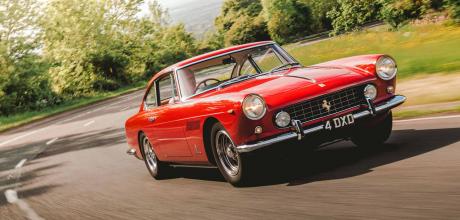1961 Ferrari 250 GTE 2+2 Series II
Cruising the Cotswolds in a group of glorious 250GTEs brings to the fore the appeal of Ferrari’s first series-production 2+2
WORDS JAMES PAGE
PHOTOGRAPHY MAX EDLESTON
ENZO’S ROAD GOING WINNER
‘Inspiring real confidence, it covers ground quickly and without fuss’
FAMILY-FRIENDLY FERRARI Once seen as a poor relation, the 2+2 250GTE now has a dedicated following
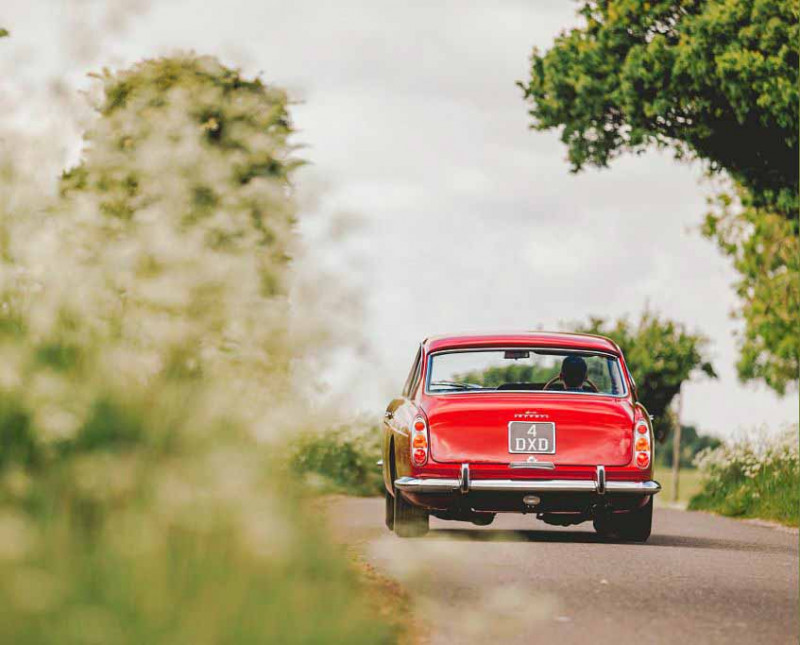
Despite Ferrari’s immense competition success during the 1950s and ’60s, the Scuderia by no means had a limitless budget at that time. Legendary des igner Mauro Forghieri later commented that the company’s commitment to evolution rather than revolution was as much a result of financial considerations as engineering principles. Phil Hill, meanwhile, once said that he couldn’t remember how much he was paid during his Formula One World Championship-winning season of 1961 – and that, even if he could, he would probably have been too embarrassed to say. In those days, you drove for Ferrari for the glory rather than the money.
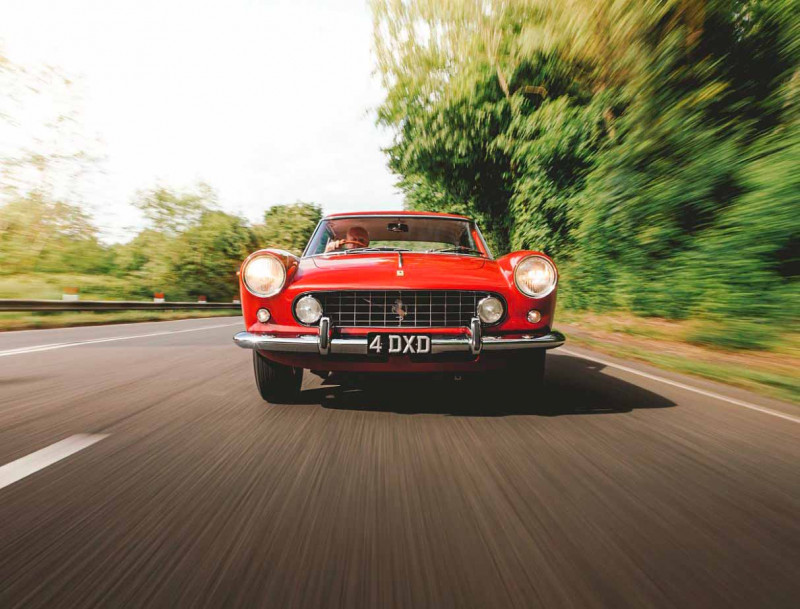
Before the arrival of commercial sponsorship in top-level international motorsport, teams had to find other ways to fund their activities. BRM, for example, was backed by the industrial might of Rubery Owen. For Ferrari, it was primarily the sale of road cars that enabled it to go racing, and during the early 1960s the 250GTE contributed most to that effort. Between 1960 and 1963, 949 GTEs were built, plus five prototypes – a total representing almost 70% of Ferrari road cars at the time.
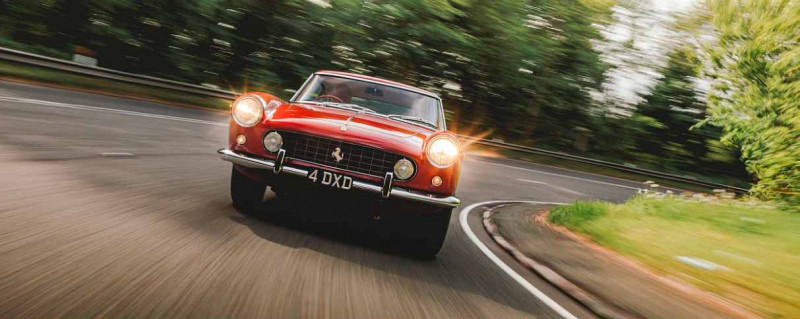
It wasn’t the company’s first attempt at a 2+2 – the Touring-bodied 166 coupé that Ferrari displayed at the 1948 Turin motor show had tiny rear seats – but previous efforts had been built in extremely limited numbers. The GTE was the first such Ferrari to go into proper series production, at a time when the concept was still relatively new to the marque. It also spawned a line of front-engined V12 2+2s that would last until the recent GTC4 Lusso; the latest Roma continues the theme, but with a twin-turbo V8. Clothed in clean, elegant bodywork that was designed by Pinin Farina – which became the single-word Pininfarina in 1961 – the GTE evolved through three Series, although there was a certain amount of mixing and matching throughout production. Enzo himself used GTEs as his regular transport, and they were sold to everyone from European royalty to racing drivers – Mexican brothers Pedro and Ricardo Rodríguez had one each – and even suspension guru Alex Moulton.
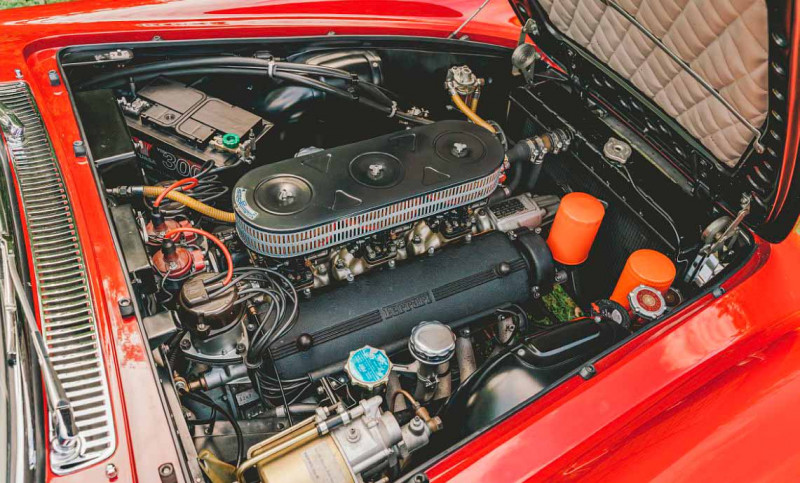
Road & Track magazine was moved to describe the GTE as ‘a not only grand, but glorious touring car’, but as the years went by and values plummeted, many of them were used as the basis for replicas of other, more ‘exotic’ Ferraris. It’s thought that this could have happened to as much as 20% of total production, but fortunately GTEs have attracted a dedicated following in recent years and there’s no longer so much danger of one suffering such a fate.
It certainly wouldn’t happen to any of the cars that have gathered at the Cotswolds premises of marque guru Bob Houghton, ahead of a two day tour through the beautiful surrounding countryside. The 15-strong group covers the full range of GTEs – eight Series 1s, two Series 2s and three Series 3s – plus two of the outwardly similar 4.0-litre 330 Americas.
There’s even a previous C&SC feature car here. In the September 1983 issue, 3 DPX – a right-hand-drive Series 1 – was compared to an Aston Martin DB4, with the late, lamented Mike McCarthy concluding that the Ferrari was the more practical and docile of the two, while the DB4 was more at home at the Goodwood circuit on which the test was carried out. It was also noted that they could then each be bought for the price of a new Ford Sierra…

Today’s gathering has been organised by Suzie Pilkington, who grew up surrounded by Ferraris. Her father, Stephen, has owned well over 100 of them. Some of those were bought in order to be sold on, but many more were keepers. Probably the most well-known was the 250GTO (3527 GT) in which Lucien Bianchi and Claude Dubois were on course to win the 1962 Tour de France, until Bianchi hit a milk lorry en route to the final stage at Reims. Pilkington owned that car for 21 years, and had previously kept a 250LM for nine years despite it hardly being a practical choice of road car.
Not that he’s the type to be deterred by such things. After the birth of Suzie’s older brother Richard in 1971, Stephen bought a 250GT SWB and was delighted to discover that the carry-cot fitted on the parcel shelf. As for Suzie, she recalls earning some pre-university pocket money in 1991 by helping to scrape the old paint off his 250GTS WB California Spider.
Stephen’s long history of Ferrari ownership started in 1970 with an eight-year-old GTE, chassis number 3883GT. It had a smoky engine and the floors were merrily rusting away, but it nonetheless kick-started an appreciation for the model that has lasted to this day, and which has been passed on to Suzie and Richard.
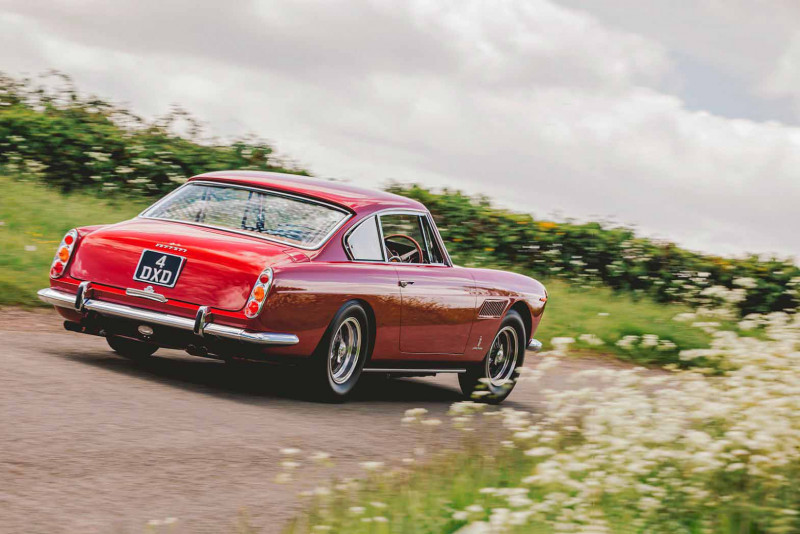
Officially known as the 250 Gran Turismo Coupé Pinin Farina 2+2, the GTE made its public debut not at a motor show, but as the course car at the 1960 Le Mans 24 Hours. It used a development of the Tipo 508 chassis that had first been seen on the 1954 250 Europa GT and which also formed the basis of 250GTs from the Boano- and Ellena-built coupés to the Tour de France Berlinettas. Although the wheelbase remained the same at 2600mm, the engine was moved forward by 200mm and the front bulkhead by 300mm, creating enough room for the back seats to be located ahead of the rear axle. Apair of extra longitudinal tubes was added to compensate for the loss of the central cruciform section used on other Tipo 508 chassis, but which had to be removed in order to create room for the overdrive unit. In this form, the frame was given the designation 508E.
Suspension was independent at the front via wishbones, and at the rear there was a live axle, parallel trailing arms and leaf springs. Tubular dampers were used all round and there was servo assistance for the Dunlop disc brakes, while the gearbox was a four-speed, all-synchromesh unit with the aforementioned overdrive on top. Motor Sport correspondent Denis Jenkinson once wondered whether the Ferrari legend would have established itself quite so strongly had its early engines been anything other than V12s, and without doubt the GTE’s powerplant is its heart and soul. This legendary unit can trace its roots back to the 1.5-litre V12 that Gioacchino Colombo designed for Enzo Ferrari in the summer of 1945. For the new 2+2, it was in 2953cc Tipo 128E specification – the E suffix for both chassis and engine being the reason why the car became known as the GTE (or sometimes GT/E). Topped by a trio of Weber carburettors, it produced 235bhp at 7000rpm.
The bare numbers, however, don’t do it justice. The Pilkington family accounts for five of the GTEs on the tour, and Suzie has generously entrusted us with a deep-red Series 2. It has recently been restored, and is now in superlative condition, and following a lunch stop at The Classic Motor Hub we head out on to the nearby country lanes.
Move the ignition key clockwise through two ‘clicks’, then push it in and the Colombo V12 fires into life. The feeling is of sitting quite low in the car and the GTE comes into its own on fast, open, flowing roads; with a front-to-rear weight distribution of 55:45, compared to the 250GT Pinin Farina Coupé’s 49:51, it’s not a car that you can flick easily through a succession of tight corners. It covers ground quickly and without fuss, however, with the servo-assisted brakes inspiring confidence and none of the controls feeling excessively heavy.
But the lasting impression comes from the engine. Not only does it give the GTE a turn of straight-line speed that still feels strong today, it does so to the accompaniment of a magnificent soundtrack. It’s the range that you notice – deep and cultured at lowrevs, it hardens considerably as it spins faster, to the point where it begins to sound more like its race-bred Berlinetta siblings than a grown-up 2+2 gran turismo, and all of the owners we speak to confirm that it’s a noise you simply never grow tired of.
Our route takes us north to the archetypal Cotswolds village of Broadway, which is packed when we arrive late on a spring afternoon. As understated as a single GTE might be, a procession of them is bound to turn heads on a busy high street, and it’s possible to make out the exact moment at which the driver of a modern Porsche 911 realises that he’s been comprehensively upstaged.
The tour is set to continue tomorrow, but our role in it ends here. There’s little doubt that these owners see their cars – rising values or not – as machines to be driven and enjoyed, rather than cossetted away as an investment; Brian Bolger, for example, produces a photograph of his 330 America with two mountain bikes strapped to the roof. There’s also a genuine camaraderie between them – a sense, perhaps, that they are custodians of a model that other enthusiasts have only recently started to appreciate, and which had been overlooked and underrated for far too long.
FERRARI’S TEST CAR NOW TREASURED
What David Wheeler doesn’t know about GTEs probably isn’t worth knowing. His recent book on the model rapidly sold out, and his own Series 1 GTE – chassis 2713GT – had a fascinating early life with Ferrari. “It was used as a bit of a hack car,” he explains. “There’s a photograph of it in the Nürburgring paddock, and Enzo apparently drove it to the Italian Grand Prix one year. We can’t prove that, but it’s a nice story!” It also became, in effect, a prototype for the Series 3’s styling: “Mike Parkes joined Ferrari in January 1963, and when it was given to him as his company car it had been modified to look like a Series 3.Originally beige, it was then painted Nocciola, which is a much nicer golden-brown colour.”
Wheeler has owned a number of V12 2+2 Ferraris, but the GTE was the only one that followed him across the Atlantic when he recently moved from the USA: “It’s beautiful – the elegant lines are Pininfarina at its ’60s best. That’s what does it for me. And even though it’s a big old 2+2, it’s still pretty light and manoeuvrable, and I just love driving it.”
‘TheV12’s note hardens as it spins faster, to the point where it begins to sound more like its Berlinetta siblings than a grown-up 2+2 gran turismo.
GTE is happiest on fast, flowing roads. Right, from top: Borrani wires were used throughout production; subtle crackle-black camcovers; all instruments are by Veglia Borletti. Triple Webers top 3.0-litre V12; some GTEs had the 128F unit, but most used the 128E. Below: crossed flags of Ferrari and Farina. Interior is beautifully appointed. The addition of an ammeter for the 1961 Series 2 led to a revised dashboard layout.
SQUARING UP TO THE BRITISH COMPETITION
Jason Downes is in the very fortunate position of being able to directly compare two of the finest grand tourers of the 1960s – the 250 GTE and theAston Martin DB5. His Series 2GTE is currently being restored, and was acquired after his Ferrari ownership had started with a 308GTB and then an ex-David Beckham 360. After admitting that he hadn’t previously known anything about GTEs, he fell in love after driving one. “They’re very different,” he says of the 250GTE and DB5. “I think the V12 makes the Ferrari much more of a GT car. It’s great at those long journeys, but it’s a little softer around the corners. It’s certainly a refined car and almost low-key, whereas the British machine is more of a sports car. I would say that the Aston Martin is quicker and feels a lot lighter, but it’s much louder in terms of things such as wind noise. “When you put it next to the GTE, the Aston Martin looks smaller, a little bit more compact. The Ferrari’s got a lot more boot space, to be fair, and the rear seats are much larger as well.
Overall, it’s a slightly bigger car but it doesn’t actually feel like that. They both feel really similar from inside. “Value-wise, GTEs went up pretty well over the past five years but they’ve levelled off, whereas the Aston has continued to climb. It used to be that you could buy an unrestored DB5 for approximately the same price as a restored GTE. I think there’s still a substantial premium on the DB5, and that it’s probably widened slightly.”
Specs & Performance
- type Series Production Car
- built at Maranello, Italy
- engine V12
- valvetrain SOHC
- displacement 2953 cc / 180.2 in³
- bore 73 mm / 2.87 in
- stroke 58.8 mm / 2.31 in
- compression 9.2:1
- max power 179.0 kw / 240 bhp @ 7000 rpm
- specific output 81.27 bhp per litre
- bhp/weight 182.51 bhp per tonne
- torque 245.4 nm / 181.0 ft lbs @ 5000 rpm
- body / frame Steel Body over Tubular Steel Chassis w/Aluminum Truck Lid and Front Hood
- driven wheels RWD
- front brakes Dunlop Discs w/Servo Assist
- rear brakes Dunlop Discs w/Servo Assist
- f suspension Wishbones w/Helical Springs, Anti-Roll Bar, Telescopic Dampers
- r suspension Liver Axle w/Semi-Elliptic Leaf Springs, Radius Arms
- curb weight 1315 kg / 2899 lbs
- wheelbase 2591 mm / 102.0 in
- front track 1397 mm / 55.0 in
- rear track 1372 mm / 54.0 in
- length 4699 mm / 185.0 in
- width 1778 mm / 70.0 in
- height 1341 mm / 52.8 in
- transmission 4 Speed Manual w/Overdrive
- gear ratios 2.45:1, 1.72:1, 1.24:1, 1.00:1, 0.778:1
- top speed ~225.3 kph / 140.0 mph
- 0 – 60 mph ~8.0 seconds
- 0 – 100 mph ~22.8 seconds
- 0 – 1/4 mile ~16.3 seconds


